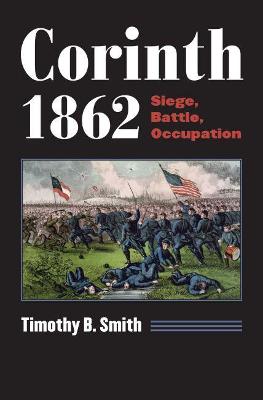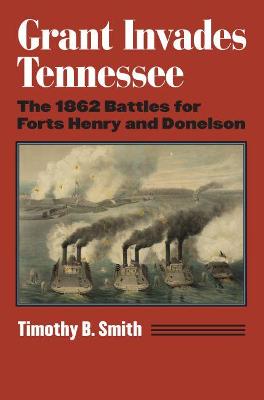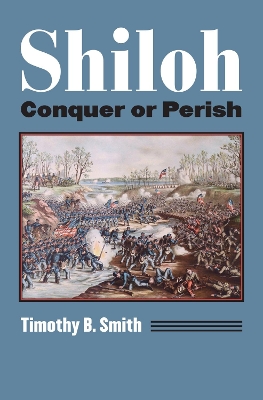Modern War Studies
3 total works
In the spring of 1862, there was no more important place in the western Confederacy-perhaps in all the South-than the tiny town of Corinth, Mississippi.
Major General Henry W. Halleck, commander of Union forces in the Western Theatre, reported to Washington that "Richmond and Corinth are now the great strategical points of war, and our success at these points should be insured at all hazards." In the same vein, Confederate General P. G. T. Beauregard declared to Richmond that "If defeated at Corinth, we lose the Mississippi Valley and probably our cause." Those were odd sentiments concerning a town scarcely a decade old. By this time, however, it sat at the junction of the South's two most important rail lines and had become a major strategic locale.
Despite its significance, Corinth has received comparatively little attention from Civil War historians and has been largely overshadowed by events at Shiloh, Antietam, and Perryville. Timothy Smith's panoramic and vividly detailed new look at Corinth corrects that neglect, focusing on the nearly year-long campaign that opened the way to Vicksburg and presaged the Confederacy's defeat in the West.
Combining big-picture strategic and operational analysis with ground-level views, Smith covers the spring siege, the vicious attacks and counterattacks of the October battle, and the subsequent occupation. He has drawn extensively on hundreds of eyewitness accounts to capture the sights, sounds, and smells of battle and highlight the command decisions of Halleck, Beauregard, Ulysses S. Grant, Sterling Price, William S. Rosecrans, and Earl Van Dorn.
This is also the first in-depth examination of Corinth following the creation of a new National Park Service centre located at the site. Weaving together an immensely compelling tale that places the reader in the midst of war's maelstrom, it substantially revises and enlarges our understanding of Corinth and its crucial importance in the Civil War.
This book is part of the Modern War Studies series.
Whether detailing command-level decisions or using eye-witness anecdotes to describe events on the ground, walking readers through maps or pulling back for an assessment of strategy, this finely written work is equally sure on matters of combat and context. Beginning with Grant's decision to bypass the Confederates' better-defended sites on the Mississippi, Smith takes readers step-by-step through the battles: the employment of a flotilla of riverine war ships along with infantry and land-based artillery in subduing Fort Henry; the lesser effectiveness of this strategy against Donelson's much stronger defense, weaponry, and fighting forces; the surprise counteroffensive by the Confederates and the role of their commanders' incompetence and cowardice in foiling its success. Though casualties at the two forts fell far short of bloodier Civil War battles to come, the importance of these Union victories transcend battlefield statistics. Grant Invades Tennessee allows us, for the first time, to clearly see how and why.
Unfolding over April 6th and 7th, the Battle of Shiloh produced the most sprawling and bloody field of combat since the Napoleonic wars, with an outcome that set the Confederacy on the road to defeat. Contrary to previous histories, Smith tells us, the battle was not won or lost on the first day, but rather in the decision-making of the night that followed and in the next day's fighting. Devoting unprecedented attention to the details of that second day, his book shows how the Union's triumph was far less assured, and much harder to achieve, than has been acknowledged. Smith also employs a new organization strategy to clarify the action. By breaking his analysis of both days' fighting into separate phases and sectors, he makes it much easier to grasp what was happening in each combat zone, why it unfolded as it did, and how it related to the broader tactical and operational context of the entire battle.
The battlefield's diverse and challenging terrain also comes in for new scrutiny. Through detailed attention to the terrain's major features--most still visible at the Shiloh National Military Park--Smith is able to track their specific and considerable influence on the actions, and their consequences, over those forty-eight hours. The experience of the soldiers finally finds its place here too, as Smith lets us hear, as never before, the voices of the common man, whether combatant or local civilian, caught up in a historic battle for their lives, their land, their honor, and their homes.
""We must this day conquer or perish,"" Confederate General Albert Sidney Johnston declared on the morning of April 6, 1862. His words proved prophetic, and might serve as an epitaph for the larger war, as we see fully for the first time in this unparalleled and surely definitive history of the Battle of Shiloh.


